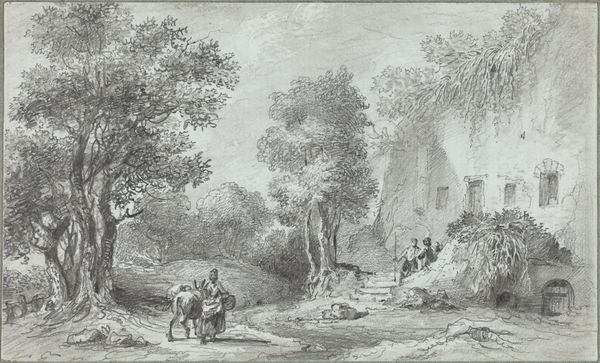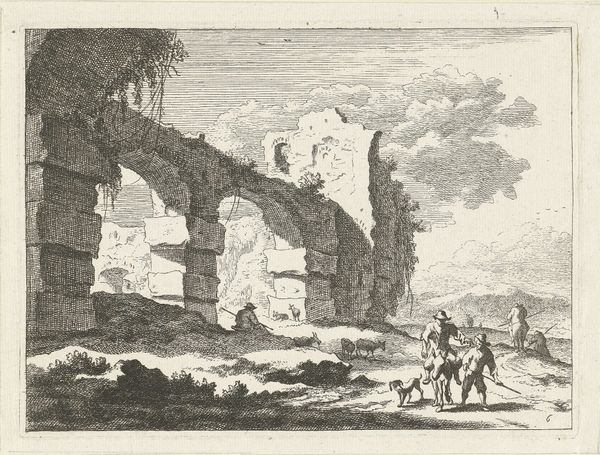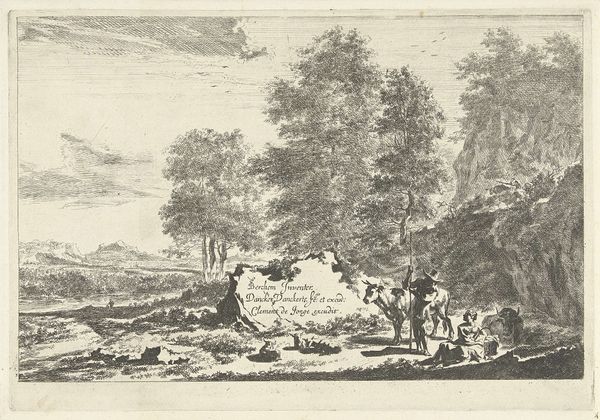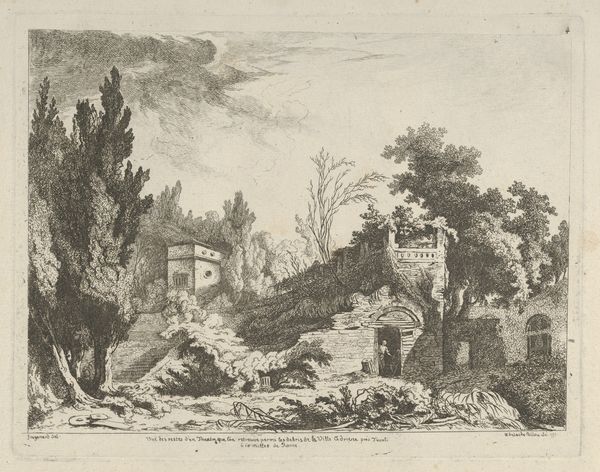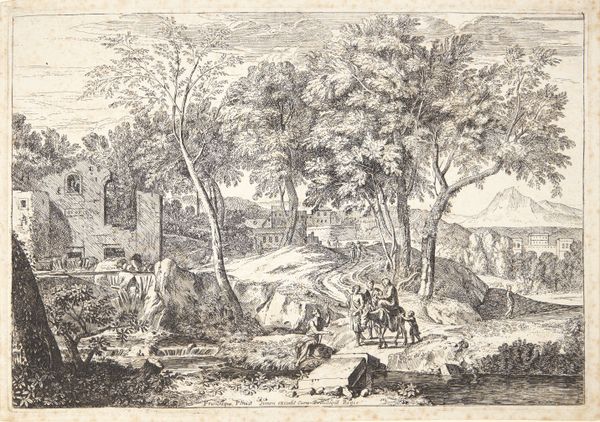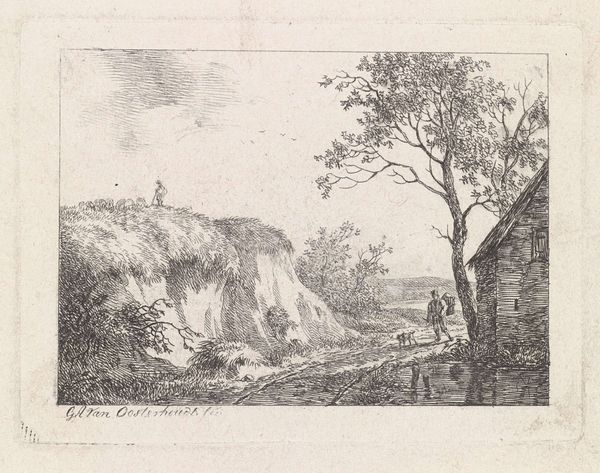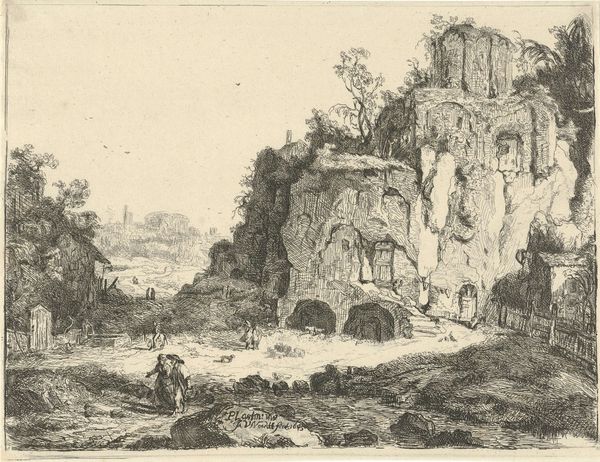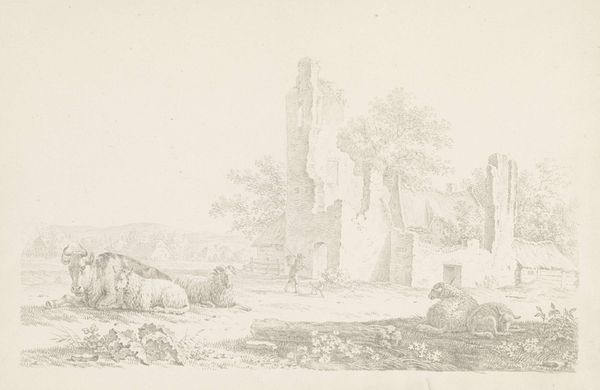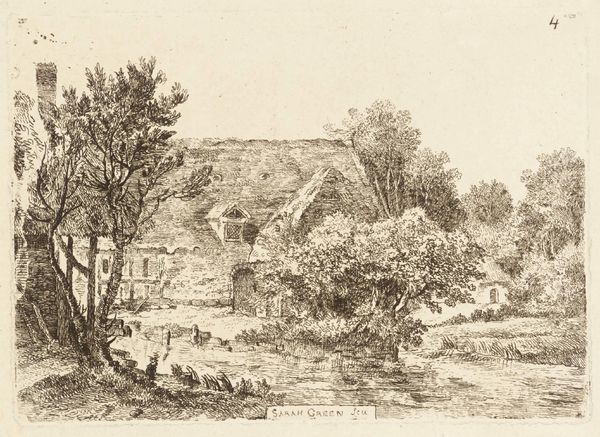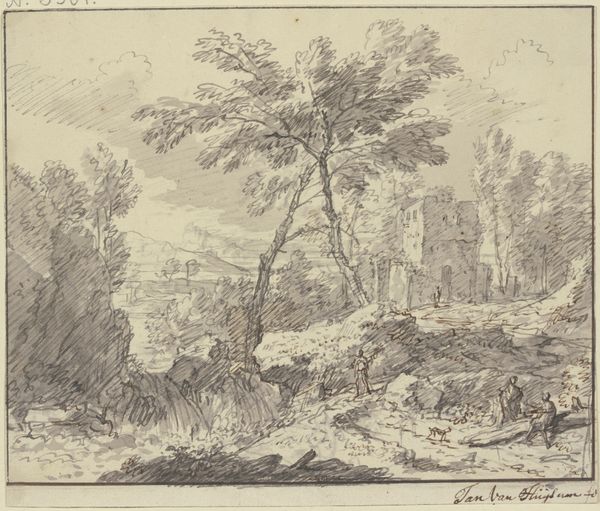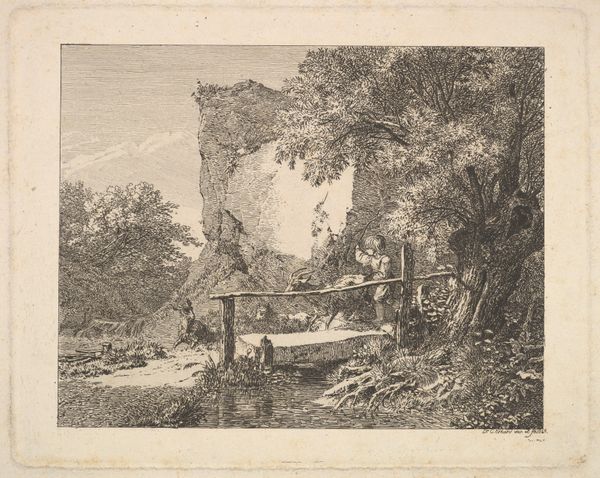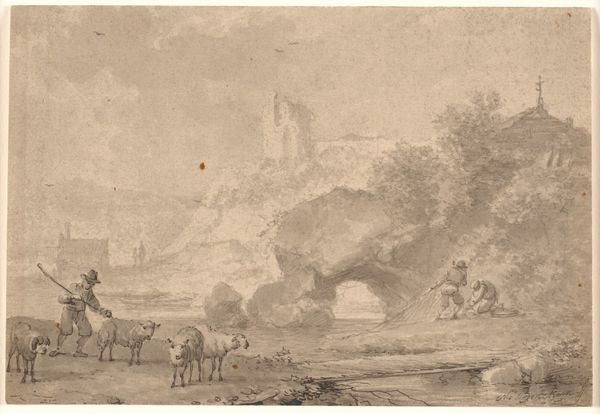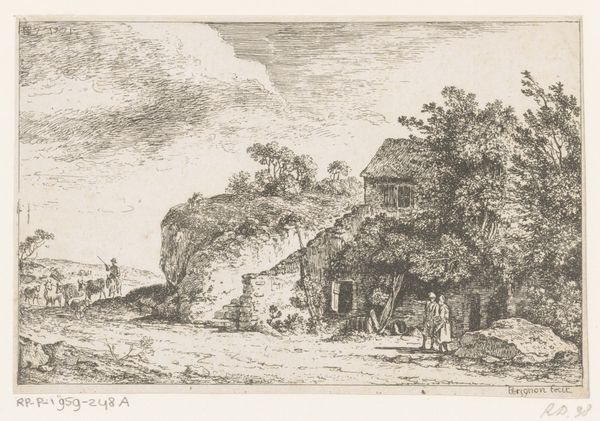
Vue du Tombeau de Virgile from Differentes vues dessiné d'après nature... dans les environs de Rome et de Naples 18th century
0:00
0:00
drawing, print
#
landscape illustration sketch
#
drawing
#
amateur sketch
#
light pencil work
#
quirky sketch
# print
#
pen sketch
#
pencil sketch
#
human-figures
#
incomplete sketchy
#
landscape
#
sketchwork
#
pen-ink sketch
#
human
#
pencil work
Dimensions: Plate: 6 11/16 × 9 1/4 in. (17 × 23.5 cm) Sheet: 9 11/16 × 12 15/16 in. (24.6 × 32.9 cm)
Copyright: Public Domain
Curator: I am struck by the immediate textural contrast— the way the stark stone ruin sits amidst the softer foliage. Editor: That's a perfect segue to our featured artwork! This is "Vue du Tombeau de Virgile" - View of Virgil's Tomb - created in the 18th century by Adélaïde Allou. You can find it at the Metropolitan Museum of Art. Curator: Right. And looking closely, you see it’s not just a romantic ruin. Note the wear on the stonework. Consider how prints like this served as a visual record, almost a catalog, of the sites considered essential to the Grand Tour experience. It’s a very mediated way of encountering classical antiquity. Editor: Agreed. This looks like a print, a practical and reproducible medium—how many of these were made, passed around, affecting the collective memory of the real place, Virgil’s supposed tomb? What about the engraver, and the printing press and the paper? How did those affect the final product, the “view” itself? Curator: Absolutely, and look at the figures scattered throughout. They aren't interacting. Each inhabits its own space within the frame, seemingly disconnected from a shared experience. Almost like placing classical statuary in an artificial picturesque landscape for consumption. Editor: I also note how Allou’s handling of line work emphasizes the artificiality of the image. The etching feels more descriptive than emotional, flattening the sense of depth. The architecture has prominence over the softer textures of the natural environment Curator: I think that's precisely the point. The artwork highlights a period invested in classifying and possessing these landmarks through representation. Each impression is evidence of a social act, an aspiration, almost like an early form of travel documentation and accessible travel guides for affluent families. Editor: Very true. This isn't just an image of a place; it's about claiming that place and displaying it. A demonstration of refined taste and leisure afforded to the upper classes Curator: Yes, a printed artifact becomes a souvenir, legitimizing access to knowledge, and even acting as a badge of cultural sophistication, and all through these lines of ink, mass produced, for wide distribution. Editor: On my side, I come away considering this intersection of place, representation, labor, and accessibility - who is Virgil for, and who is this "tomb" for in the 18th century. Curator: And I leave feeling reflective about the institutional and social frameworks which shape the meaning of these places over time and across different media. Thank you.
Comments
No comments
Be the first to comment and join the conversation on the ultimate creative platform.
